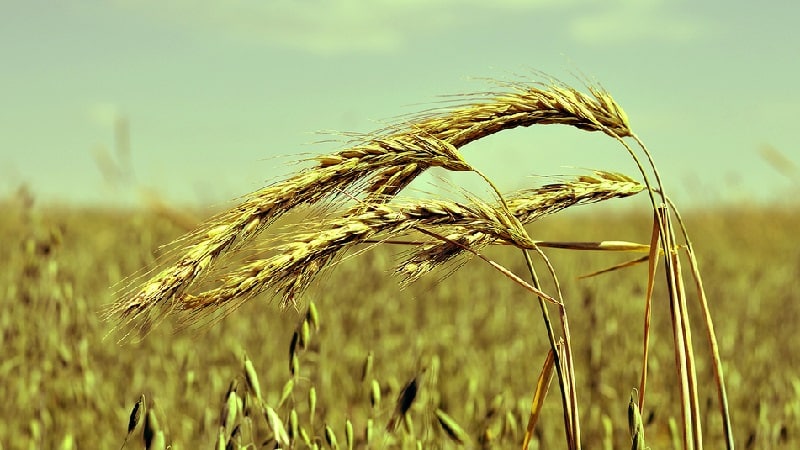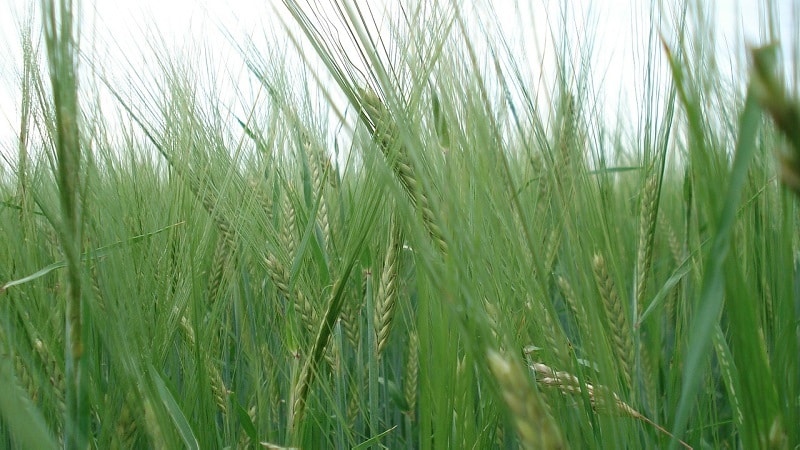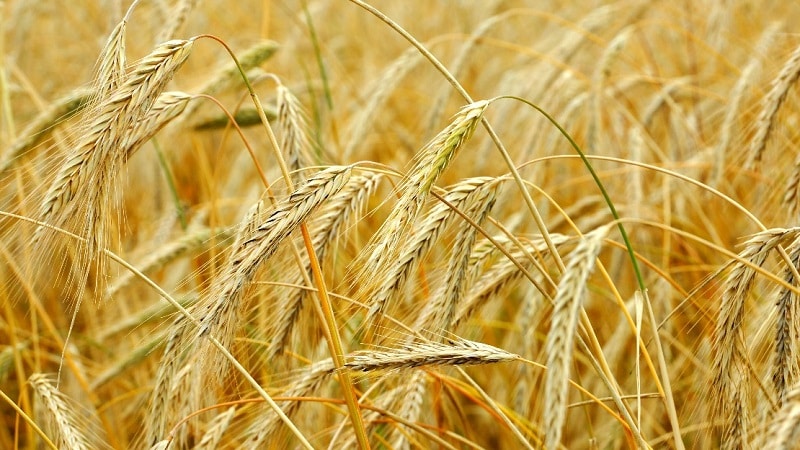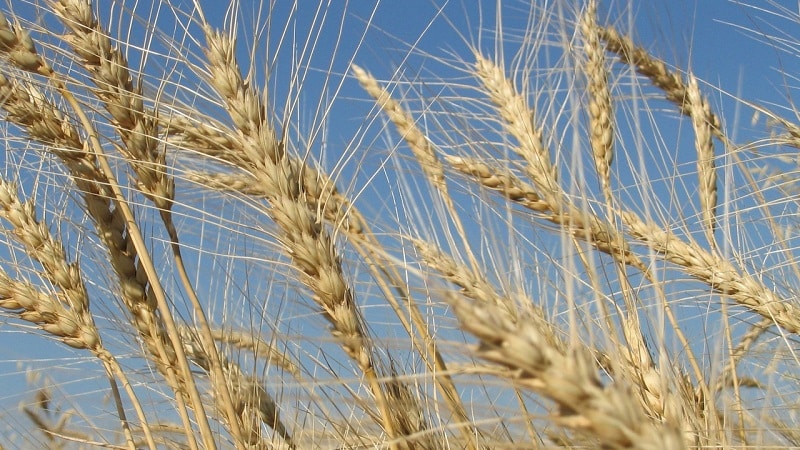What is the technology for cultivating winter rye and its final yield?
Winter rye is an ideal predecessor for valuable agricultural crops. When it is grown, the number of weeds and pests decreases, and the soil structure improves. The resulting grain and straw can be sold, which will cover the costs of improving the condition of the fields and even make a profit. In some regions it is the only cereal available for cultivation.
We will tell you in this article how to grow winter rye and get maximum yield.
What are the features of growing winter rye?
The main advantage of growing winter rye is the winter hardiness of the crop.. Crops can easily withstand cold temperatures down to -25...-30°C, even if there is no snow cover. In harsh conditions, the yield of some varieties is 20-30 centners per hectare. Wheat simply cannot withstand such frosts.
Winter rye varieties branch well, 3-8 spikelets grow from one grain. The plants grow quickly, displacing weeds from the fields, including wild oats and thistle. Winter rye is used as a precursor before sowing row crops and spring cereals. They are grown in soils with high acidity, which wheat and other cereals cannot tolerate.

Winter rye is used like early green manure in organic farming. It displaces weeds and loosens the soil. Long roots lift useful minerals from deep layers of soil. After warm weather sets in, the young shoots are cut off and the main crop is sown on the field.
Mown rye quickly rots and serves as fertilizer for new plantings.
How rye grows
Rye is a herbaceous annual plant with a hollow, bare stem.. Cultivated varieties have an average height of 80-100 cm.
Other characteristics:
- leaves are fleecy, with a characteristic bluish color;
- the root system is fibrous, branched, reaches a depth of 1-2 m;
- from each seed 6-8 shoots grow, under favorable conditions - up to 90;
- the stem ends in two-row spikelets;
- the fruit is an elongated (5-10 mm), slightly laterally pressed grain, 1-3 mm thick.
The weight of a thousand seeds depends on the variety. In diploid seeds, 1000 seeds weigh 20-35 g, in tetraploid seeds - 50-55 g.
Interesting things on the site:
Varieties of rye: seed, winter and other varieties
What kind of cereal is made from rye and its beneficial properties
Where is it grown?
Rye has long been the main grain crop in Europe, after which it gave way to wheat and barley. It is believed that the ancestral home of modern cultivated species was Turkey, where rye was considered a weed. After the spread of grain farming in the northern territories, people paid attention to cereals due to its cold resistance.
Rye is now grown in many countries. In the Russian Federation, the most favorable regions for the cultivation of cereals are the republics of Bashkiria and Tatarstan, Orenburg, Saratov, Kirov and Volgograd regions.
In Yakutia and Transbaikalia, only spring varieties are grown, since winter varieties are not able to survive very cold winters.
In the southern districts and regions of the Russian Federation, rye is not grown, since the fields are allocated to more productive and valuable crops: wheat, corn, sunflower.
Optimal growing conditions
Rye belongs to the temperate zone crops. Seeds germinate at a temperature of +1…+2°С, for germination they need to rise to +4…+5°С. A decrease in temperature in autumn has little effect on the growing season. The stems bush well at +12°C and stop growing at +3…+4°C. Sharp, prolonged cold spells in the spring can slow down development.

Culture is light-loving. Plants develop quickly with long daylight hours. With sufficient light, rye grows well, ears form on all stems. With shortened daylight hours, abundant branching begins without the formation of spikelets.
Important. Only dry seeds can be stored; after getting wet, the grains quickly die if the temperature drops below 0°C.
Habitat: why is rye demanding?
The culture loves moisture. For seed germination, soil moisture must be above 21.8%. In this case, the first shoots appear already on the third day after sowing. When humidity decreases to 18.5%, development slows down. Shoots appear only after a week.
During the growing season, especially tillering and flowering, the need for moisture increases sharply. Plants from 1 hectare consume up to 1600 tons of water from the soil during the growth of green mass. Therefore, in arid regions the possibility of irrigation must be provided. After flowering, rye's need for water drops significantly.
Cereals grow on soils of varying acidity (pH=5.3-6.5). It is grown in regions with podzolic soils, chernozems, and structured forest loams.
Pollination of rye requires warm, dry weather with a light breeze.. With strong humidity, windiness, and cold weather, pollen dies.
Read also:
What is made from rye and what are the benefits of this cereal?
Cultivation technology
To obtain a harvest, winter rye is planted in clean, busy and green manure fallows, if the crop is provided with complete moisture. The sowing period for winter crops depends on the characteristics of the variety and climatic conditions, on average 50 days before the temperature drops below +4...+5°C. During this time, the seedlings will germinate enough to withstand the winter cold.
Interesting. Rye is sometimes planted in early spring. In such cases, vernalization is first carried out: the seeds are germinated to 1 mm, sprinkled with a moist substrate and grown in the refrigerator for about a month, after which they are sown.
Soil and seed preparation
Fertilizers are applied before sowing winter rye.. It is better to use organic: manure, compost. The norm is 30-35 kg/ha for poor soils and 15-20 kg/ha for chernozems. When sowing after late spike predecessors, the dosage increases to 40-45 kg/ha. When sowing, superphosphate is applied on time - 50 kg/ha. Soil acidity is reduced with lime fertilizers to 3-5 t/ha.

High-quality planting material is selected for sowing:
- grain germination rate more than 92%;
- purity above 97%;
- weight of 1000 seeds is not less than 35 g;
- growth force 80% or more.
Before planting, the seeds are treatedto prevent infection with fusarium and helminthosporium rot, ergot and other diseases. Freshly harvested grains are heated in the sun for 3-5 days or in a grain dryer for 2-3 hours.
Sowing
It is recommended to sow winter rye when the average daily temperature drops below +15°C. This reduces the likelihood of crop damage by insects and accelerates seed hardening.
Most often, narrow-row sowing is used with row spacing of 7-8 cm. The seeds are buried no more than 5 cm, otherwise the yield drops catastrophically.
Rye care
After sowing, the seeds are rolled, harrowed, and if necessary, the fields are treated with herbicides and retardants. Rolling can be done immediately after planting if there are ring rollers. Compacting and leveling the soil has a beneficial effect on seed germination.
As the rye develops, it is fed with nitrogen fertilizers: 30-40 kg/ha at the stage of intensive growth and when buds are formed.
Crop protection
In autumn, after the growth of seedlings has slowed down, plants are treated against root rot and snow mold. In winter, snow retention work is carried out. In the spring, fields are harrowed if possible. Typically, nature “gives” only 4-5 days for this type of processing, since after warming the rye begins to grow quickly.
To prevent the appearance of fungi, fields are treated with fungicides; when weeds appear, targeted herbicides are used.
When the rye blooms
Fields begin to bloom 7-10 days after heading. Flowering lasts up to two weeks. In hot weather, the period can be shortened to 6-8 days. With increased humidity and cold weather, the anthers do not open, and flowering lasts longer.
The flowers open several times during the day for 15-30 minutes, after which they close. The first buds bloom in the middle part of the ear, then flowering spreads to the edges.
When it is removed from the fields
Rye is harvested in the middle of the waxy ripeness stage.. When harvesting, speed is important. When rye ripens, 4-6 days after the end of waxy ripeness, the grains begin to rapidly fall off, and the harvest is lost.

Harvest
Single-phase harvesting is carried out using combines when the moisture content of the grains decreases to 20%. Due to the short harvesting period and the rapid fall of seeds, separate harvesting is often used.The rye is mowed and placed in windrows. After a few days, the stems and grain dry out. The windrows are collected and threshed. This method reduces grain loss due to shedding.
Winter rye yield
Crop yield depends on the growing region, the selected variety or hybrid and is about 20 c/ha. For example, in the Republic of Kalmykia, farmers manage to collect an average of 9 c/g, and in the Krasnodar Territory - 37 c/ha.
Conclusion
Growing winter rye, subject to cultivation technologies, is of practical importance. The crop is low-cost, production profitability in some regions exceeds 60%. In case of an unsuccessful winter and massive lodging of crops, at the first warming, you can plant the fields with other crops or spring rye.